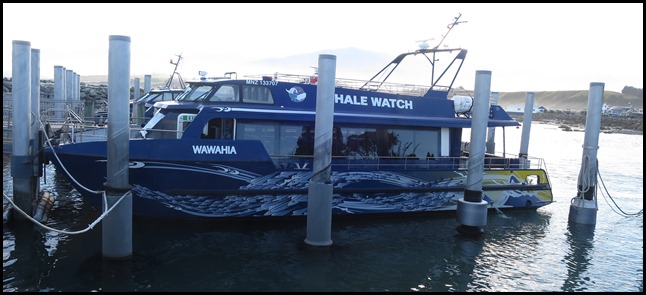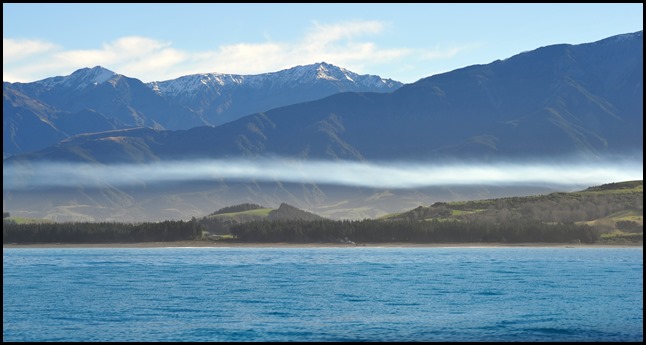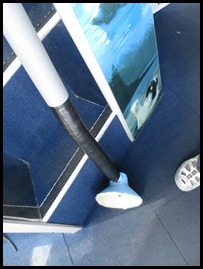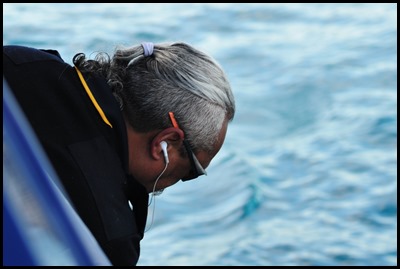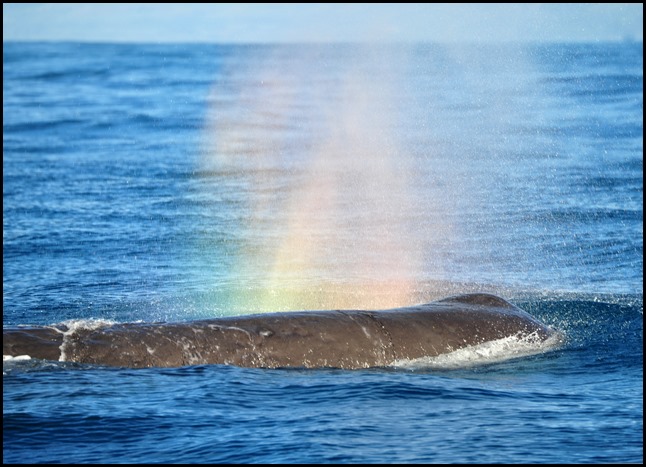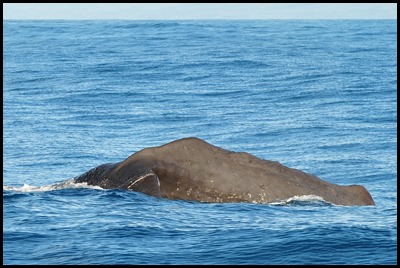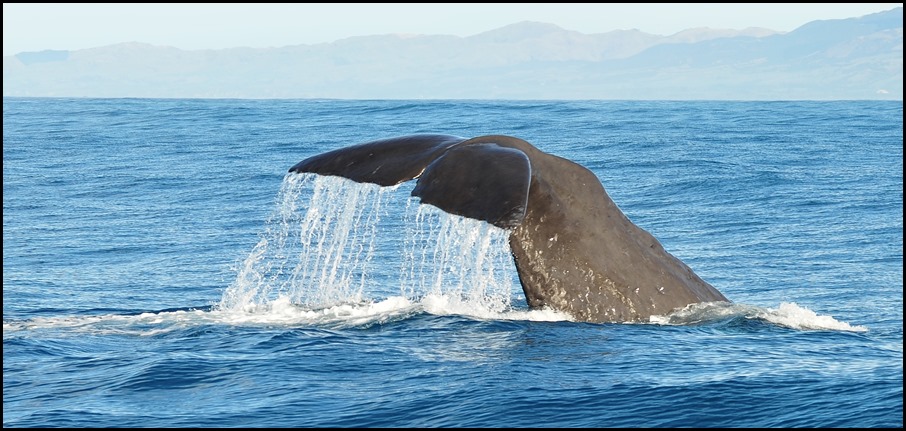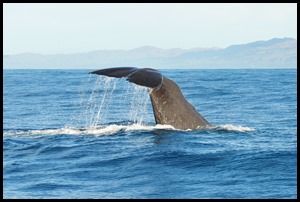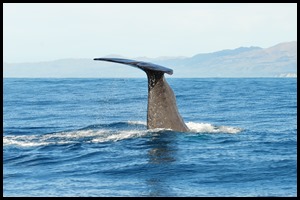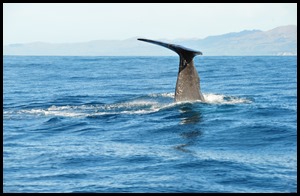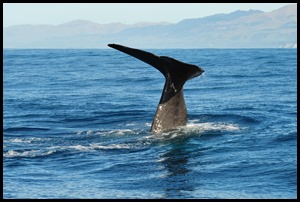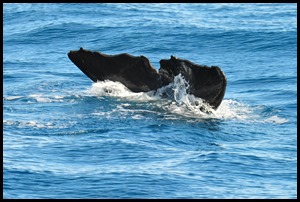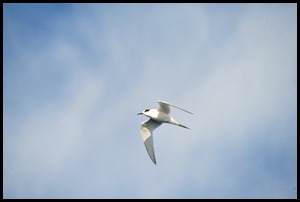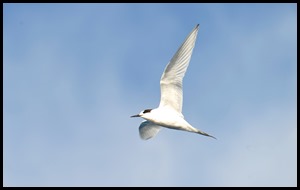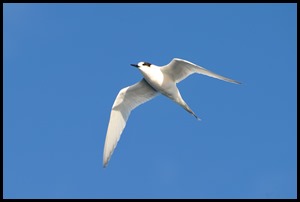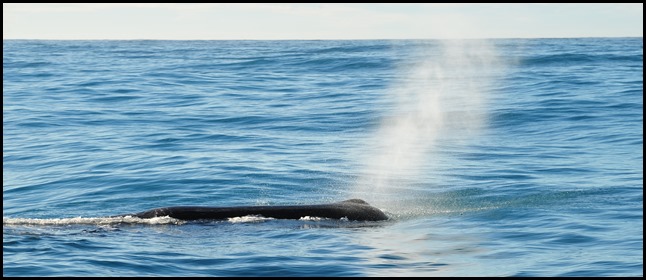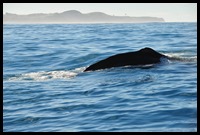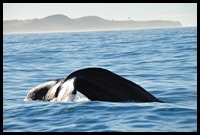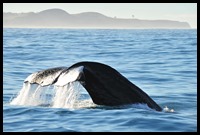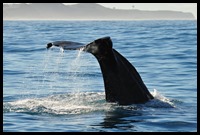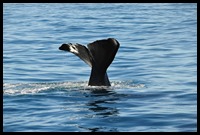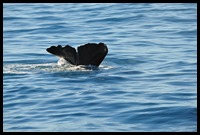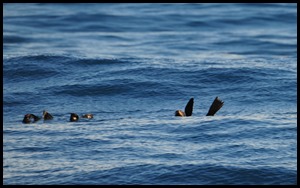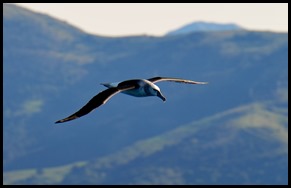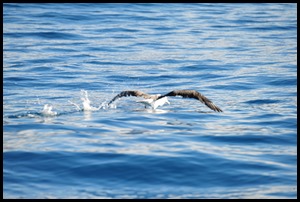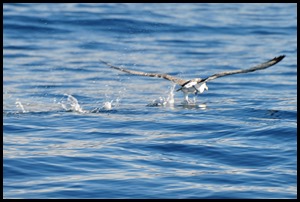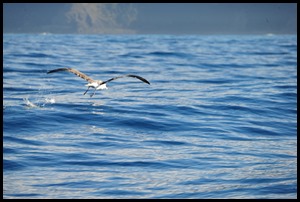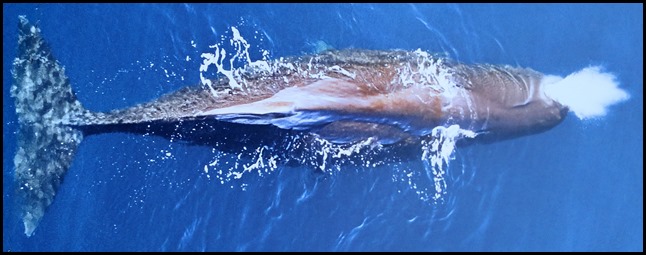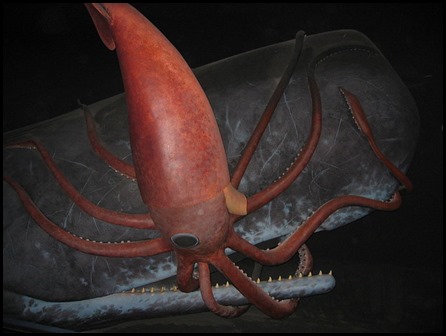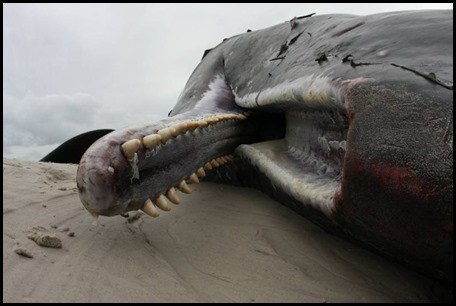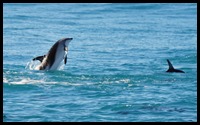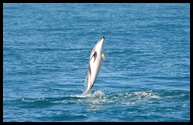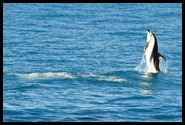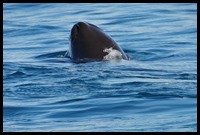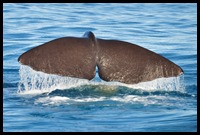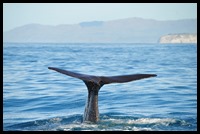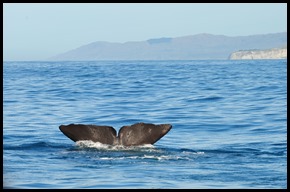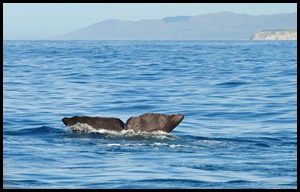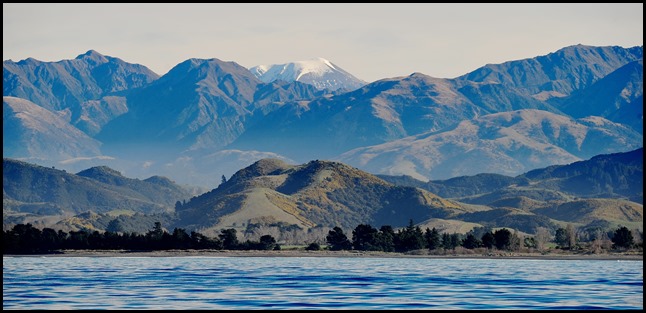Whale Watching

|
Our Whale Watching Trip 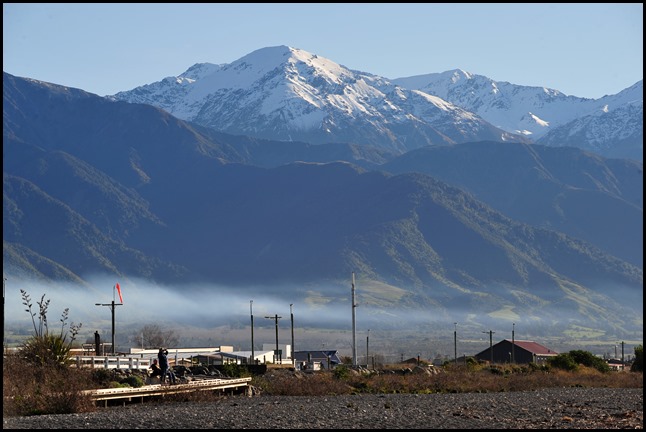 This morning we bimbled down to the beach, a break in
the weather gave us a crisp, clear day – plenty of
haze though.
Sea haze and bonfire competition.
Our whale watching trip was on, yay. We watched a video about dolphins, listened to a safety briefing where the nice lady warned us that we would have moderate sea conditions. We were escorted to Gus, the bus driver who took us on the ten minute ride to the marina. Wawahia and her crew were waiting to welcome us aboard this fast, jet craft.
A little way out we had an amazing view of the haze – this is definitely our new habit, haze watching.
Within minutes of getting out into deep water, Captain Jim had grabbed his tool and was listening for whales.
The classic site. We captured this chap making his own rainbow.
These gentle giants of the deep lay on the surface to digest their food, reoxygenate, then take a massive breath – head slightly up, arch their back and get ready for the flip.
The must have picture.
So there you are standing at the front of a boat, watching a tail disappear.......But oh, the thrill, the wow, the uniqueness.
A curious visitor.
Captain Jim heard word from our sister ship that had been out an hour longer then us. Co-ordinates given, we raced toward our next chap, known as New Zealand to the crew because of a double mark on his back. We watched again, cameras at the ready for his dive.
Again we stood awe struck, most people watching held their breath and down he went.
The fur seal pups were not fazed. The cape petrel got about his journey and our first albatross in NZ.
Take off is a massive effort for this huge wandering albatross.
I took this picture that adorned a billboard advertising whale watching by helicopter.
Sperm whales are found in all the world’s oceans, usually in the submarine canyons of waters deeper than twelve hundred feet. They can be seen here in Kaikoura all year round, as the deep canyon here is a main feeding ground of a group of males. Females usually inhabit the warmer waters near the tropics. Sperm whales are often spotted in groups or pods of fifteen to twenty animals. Pods include females and their young, while males may roam solo or move from group to group. Females and calves remain in tropical or subtropical waters all year long as their blubber layer is much less and they cannot tolerate the cold water, They apparently practice communal childcare. Males migrate to higher latitudes - they have twenty to thirty centimetres of blubber to keep them warm - alone or in groups, and head back towards the equator to breed. Driven by their tale fluke, approximately sixteen feet from tip to tip, they can cruise the oceans at around twenty three miles per hour.
This is a model of a sperm whale attacking a giant squid – Museum of Natural History, New York City.
Sperm whales are easily recognised by their massive heads and prominent rounded foreheads. They have the largest brain of any creature known to have lived on Earth, more than five times heavier than a human’s. Their heads also hold large quantities – about two and a half tonnes of a substance called spermaceti, once thought to be the males sperm or semen, hence their name. Spermaceti was highly sought after for the production of candles, cosmetics, lubrication of sewing machines and industrial machinery. Famous for its use in Rolls Royce engines and gearboxes, it even went to space as the early Apollo missions used it. The oil lamps around New Zealand shone brightly with this oil. Scientists still do not understand the function of spermaceti , one common theory is that the fluid - which hardens to wax when cold—helps the whale alter its buoyancy so it can dive deep and rise again. Sperm whales are known to dive over seven thousand feet in search of squid to eat. These giant mammals must hold their breath for up to ninety minutes on such dives. These toothed whales eat thousands of pounds of pelagic fish, such as tuna, black shark, king fish. Their favourite food though, is squid – but whatever they eat it weighs in at about one ton per day. The elusive giant squid can grow to an average length of thirty six feet, but has been known to top fifty five feet.
The sperm whale has twenty to thirty pairs of conical teeth on the bottom jaw. The top jaw has sockets that the bottom teeth slide into when their mouth is closed. The sperm whale doesn’t use teeth for chewing, but similar to the action of a crocodile, their jaw snaps shut and food is swallowed whole. Eat tooth can weigh up to a kilogram and can be twenty centimetres in length. The picture is sadly of a stranded sperm whale, but it does show their amazing teeth and their corresponding sockets.
These popular leviathans are vocal and emit a series of "clangs" that may be used for communication or for echolocation, using the sound to bounce back to the sender—revealing the location, size, and shape of their target. Measured at two hundred and thirty decibels, making it the loudest underwater sound produced by any animal. It it thought that the sperm whale can use its sonar not only for locating its prey but to stun or kill it. Sperm whales were mainstays of whaling's 18th and 19th century heyday. A mythical albino sperm whale was immortalised in Herman Melville's Moby Dick, though Ahab's nemesis was apparently based on a real animal whalers called Mocha Dick. Occasionally the sperm whale's great size allowed it to defend itself effectively against whalers. The animals were targeted for oil and blubber. Ambergris, a waste product from the animal’s digestive system, often forming around a squids beak therefore protecting the whales gut, it was (and remains) a very valuable substance used as a fixative in perfumes. Despite large population drops due to whaling, sperm whales are still fairly numerous. The species is now protected by a whaling moratorium, and is currently listed as vulnerable by the IUCN.
Mature males average fifty two feet in length but some may reach sixty seven feet, with the head representing up to one-third of the animal's length.
The sperm whale is the second deepest diving mammal, following only the Cuvier's beaked whale. Sperm whales can live for more than sixty years. Females give birth every four to twenty years, and care for the calves for more than a decade. A mature sperm whale has few natural predators. Calves and weakened adults are taken by pods of orcas.
Jim took us to see a massive gang of dusky dolphin, upwards of three hundred of them. Poor Bear, he took loads of video snippets trying to show these fun loving creatures leaping. All they would do was swim nicely.
The second he switched off they went nuts.
Our final dive . This chap kindly gave us a glimpse of his head before he did his arched back.
As we headed back after our extraordinary trip, we reflected on seeing five sperm whales spouting, four of them diving, the biggest gang of dolphins we have ever seen, albatross, fur seals and so much more. Amazing.
ALL IN ALL A CRACKING DAY A LIFETIME EXPERIENCE |

